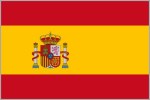
Historic fortified regional capital, famous for its quality steel as supplied to the Roman legions

Toledo has long been an important and strategic city in Spain‘s Castilla La Mancha region, south of the capital. Toledo’s claims to fame include its typical black steel inlaid with gold and silver, the painter El Greco, and the Alcázar which dominates the skyline high above the Rio Tajo.
Toledo was a nice little place to visit, by bus it is about an hour from Madrid, like Segovia it is easily done within a day. Again I was lucky with the weather and was able to wander around taking photographs beneath the azure Castillian sky for the whole day.

Like Segovia, Toledo is built on the top of a cliff, for strategic advantage. The Alcázar in Toledo has been destroyed and rebuilt a number times during its centuries of existence, but most severely during the Spanish civil war in 1936.
From the east, Toledo is reached by the Puente de Alcántara, built by the Romans and still in use today.

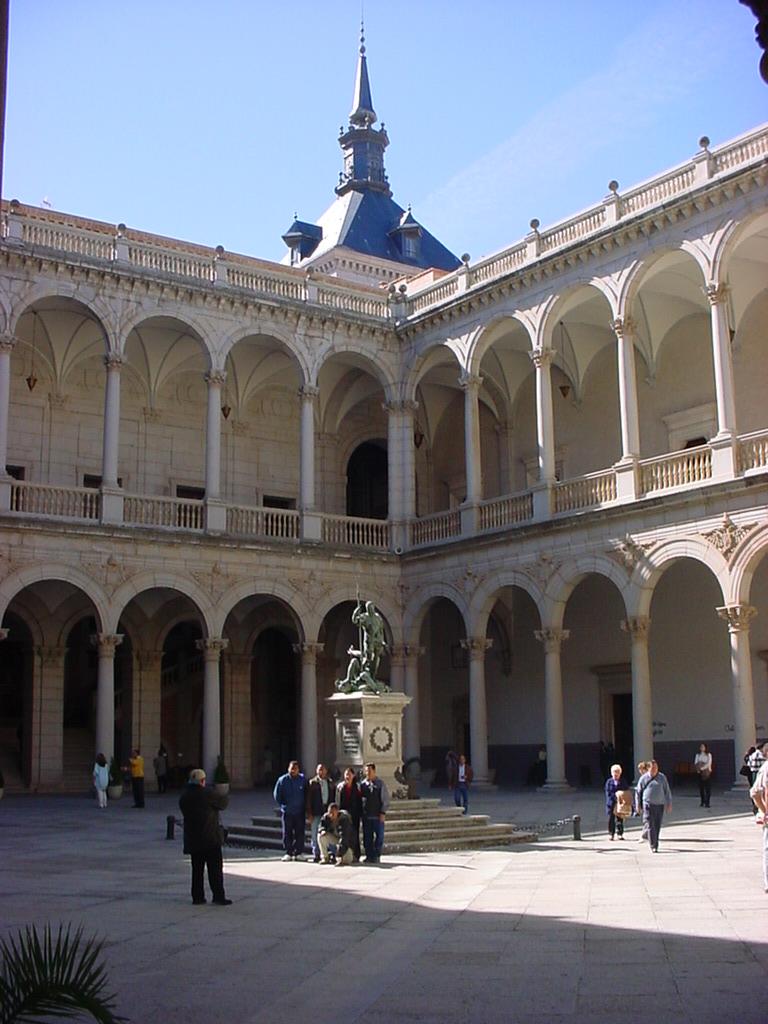
It was during the Spanish civil war that six hundred women and children were holed up in the cellars of the Alcázar during a two month seige which saw the systematic destruction of the building by artillery, mines and aircraft, yet the people inside refused to give in. When the Alcázar was finally liberated in September 1936, the view from this point was reduced to a couple of arches and a statue lying on the ground amongst the rubble.
There are many shops just like this in Toledo specialising in Toledo steel, in the form of jewellery, ornaments, plates, swords and so forth. They also sold various other weaponry which quite frankly would be absurdly illegal in the UK, pistols and some very dangerous looking crossbows, maces and flails. But in contrast they also had shields and suits of armour, which you could take home easily enough by wearing, although they might raise eyebrows at airport security.
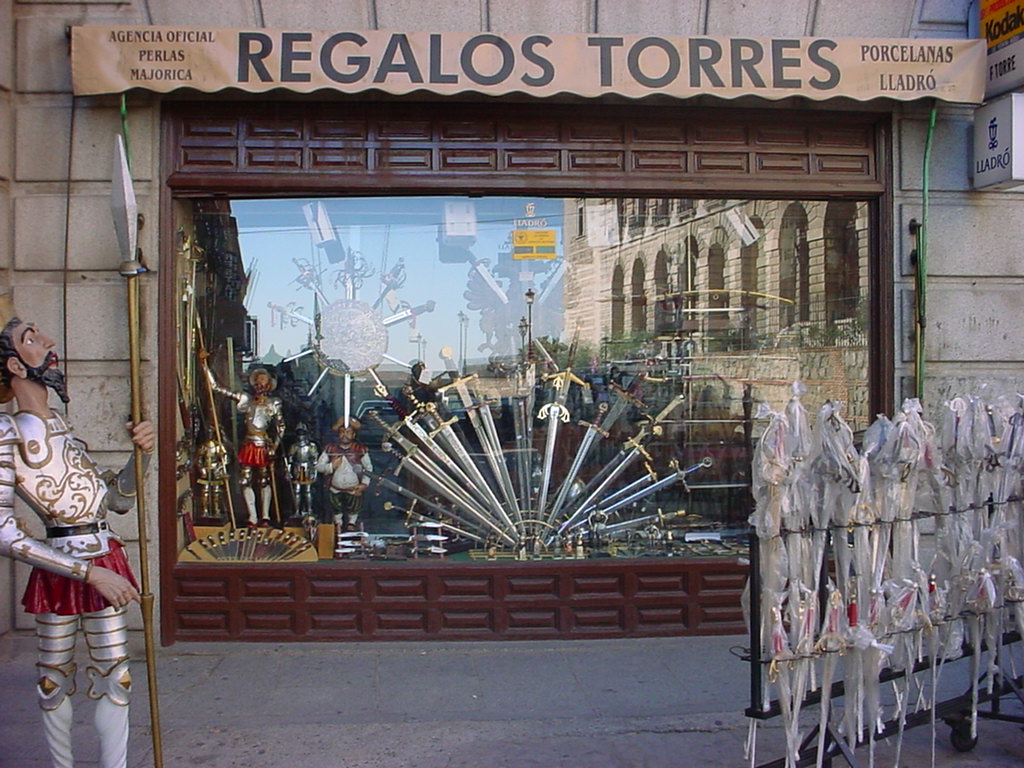
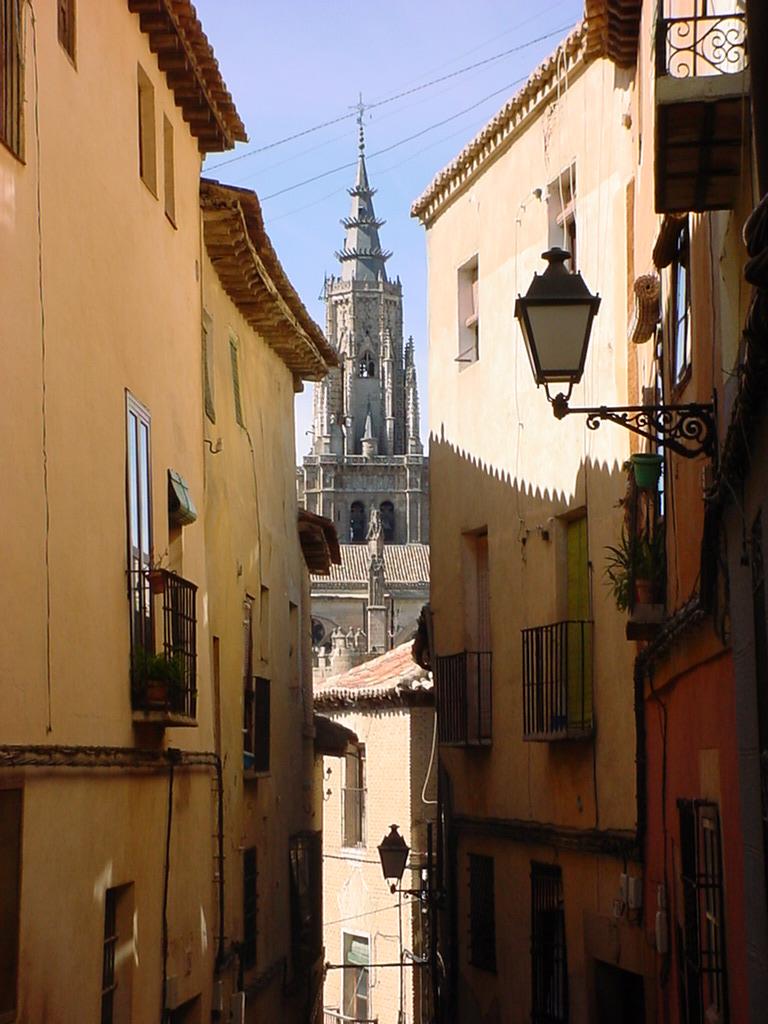
Looking down one of the many narrow streets in medieval Toledo, towards the cathedral.
The cathedral in Toledo, which like its counterpart in Glasgow took around three hundred years to complete, starting in 1227. Many of the pictures I took in Toledo were of the beautiful blue sky, it was so clear.
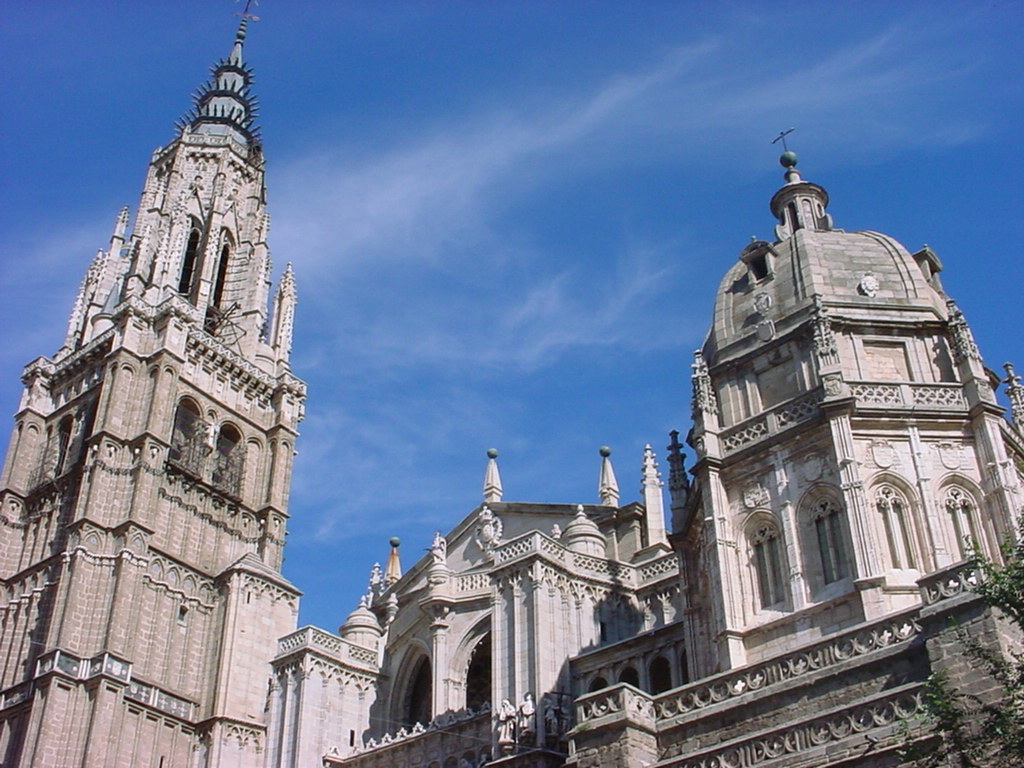
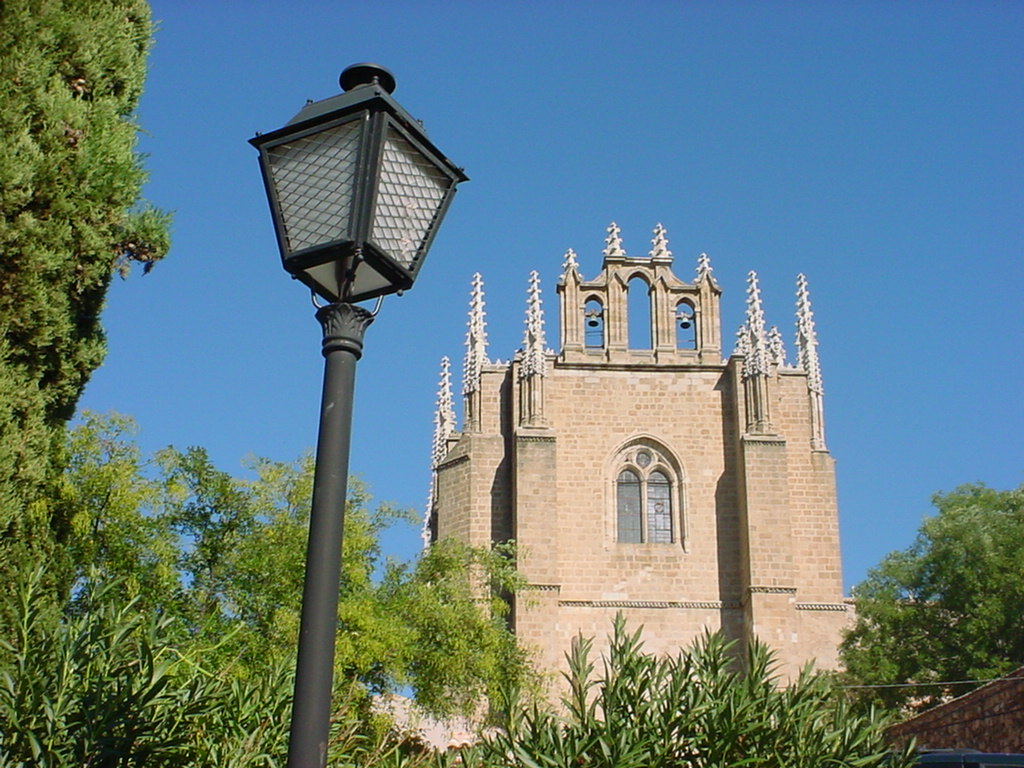
St John of the Kings Monastery sits at the western extremity of Toledo, looking out over the cliff down to the river. This is again a sky photo, with good deep colours in the blue and green.
Another sky type of photo, just a random but very Spanish-looking house. I was trying to give a good impression of typical Spanish towns here.
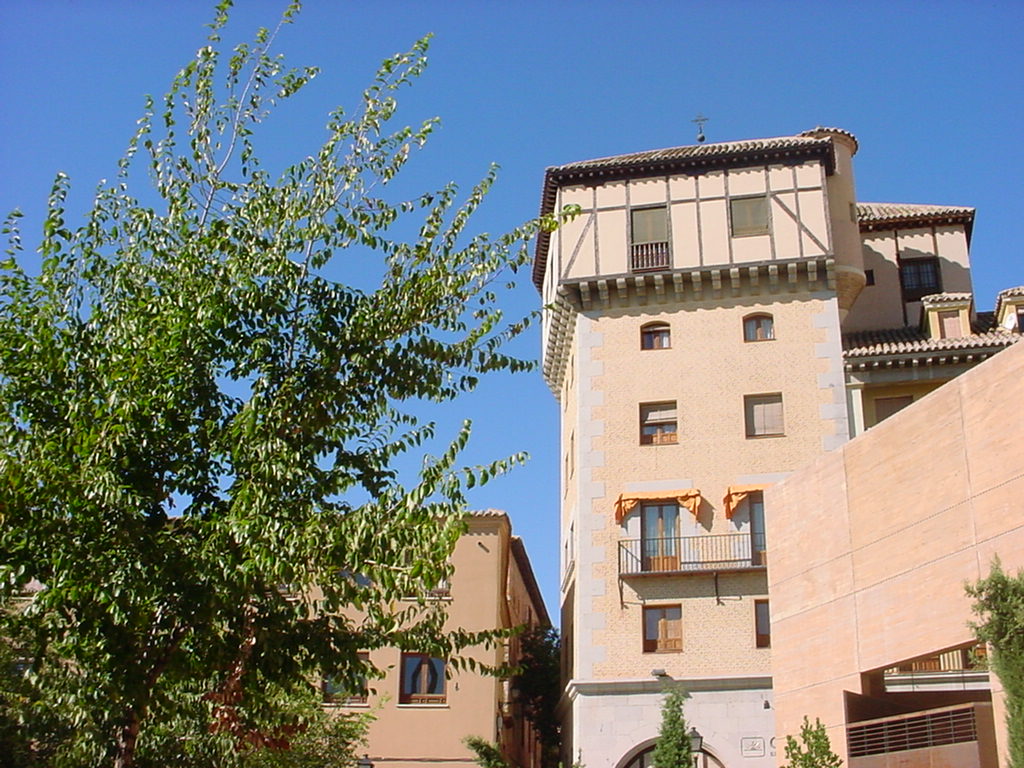

An enclosed bridge between two buildings, not a common feature but one that I have witnessed similarly in both Oxford and Cambridge.
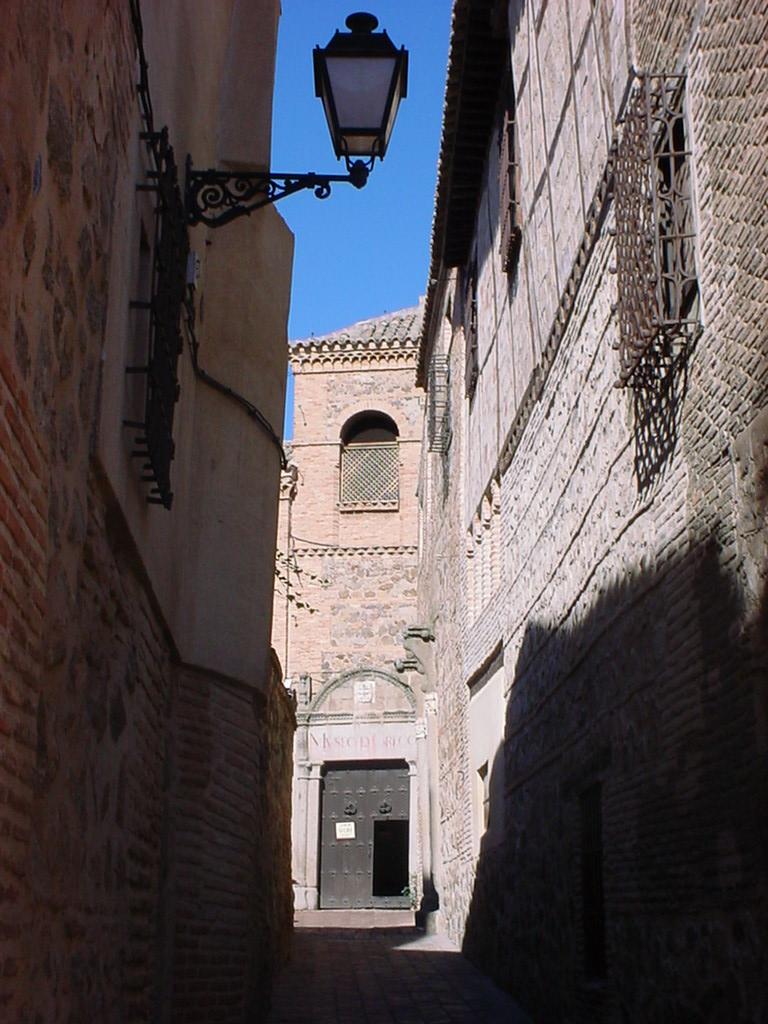

There’s nothing like the peaceful lazy atmosphere of a Spanish plaza, especially with the sounds of the guitar.
Parts of Toledo retain their walls and gatehouses, this is the Puerta de Bisagra.


A couple sit and take in the view across the canyon, through which the Rio Tajo flows.
The Rio Tajo or Tagus River is the longest in the Iberian Peninsula, flowing as it does out of Spain and into Portugal, changing its name to the Tejo and reaching the Atlantic Ocean at Lisbon.
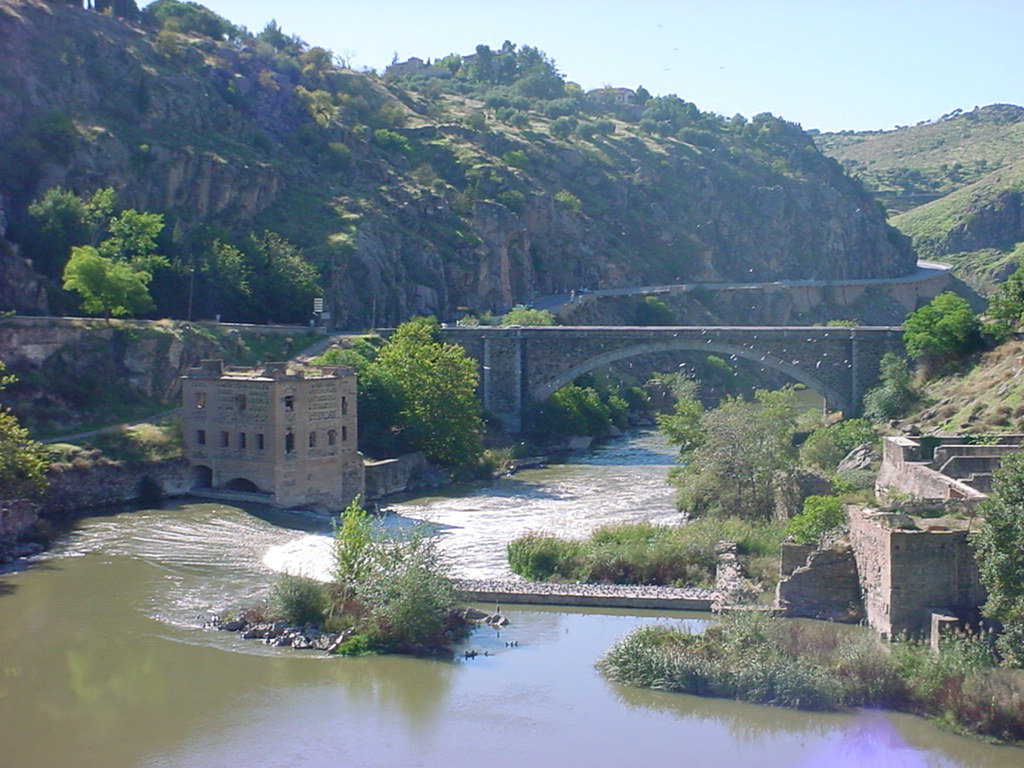
Created 2002 | Updated 2015
